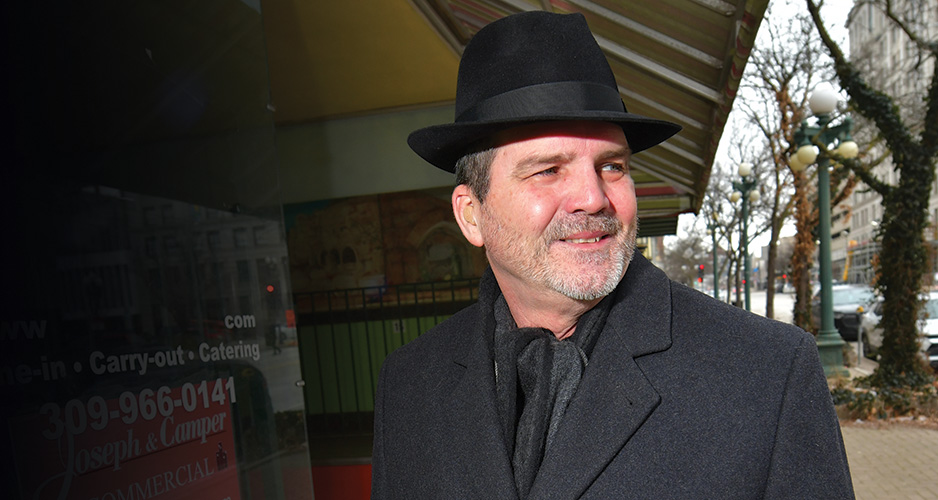Peoria’s Downtown Development Corporation acts as a ‘quick reaction force’ for getting things done in city’s center
Peoria’s Downtown Development Corporation has no publicly elected board members, it cannot make policy and receives no public funding.
Yet 10 years after its creation, the DDC can point to its involvement in the redevelopment of eight buildings in the Warehouse District, resulting in a 12-fold increase in the total average tax revenue produced by the properties.
The Downtown Development Corporation came about in 2013 through the efforts of Peoria’s CEO Council, a group of 50 business and industry leaders. Michael Freilinger was hired as the Downtown Development Corporation’s president and CEO, and a board was seated.
The goal of the CEO Council was to improve the overall business climate in Peoria. A vibrant and thriving Downtown is considered a linchpin in that aim.
Working toward ‘an exciting place to be’
The DCC advocates for policy decisions, smooths the way for land acquisitions, and acts as a liaison between City Hall and developers.
“We’re kind of a quick reaction force for the city. We’re outside city government. We can act very quickly to get things done and we can keep it quiet,” said Freilinger, adding that confidentiality is important when it comes to the buying and selling of land.
The first goal of the DDC’s strategic plan has been to increase the number of people living Downtown, modeled on the successes of other cities.
Downtown residents provide more of an after-business hours presence, supporting the restaurants and bars and other nearby establishments, said Freilinger.
“People on the streets provide activity, which makes it an exciting place to be,” he said. “Businesses start considering maybe they should be downtown, because that’s where their employees want to be.”
Focusing on Warehouse District first
During the early days of DDC, the group divided the downtown area into four separate sections: the Riverfront District, Core Business District, Warehouse District, and Medical District. Added later was the East Bluff Growth Cell District.
Since its inception, the bulk of the DDC’s work has been in the city’s 165-acre Warehouse District, but that was not the plan.
Indeed, “there was not a real plan at the start,” said Freilinger. “The interesting thing about the Warehouse District is it checked off all the boxes for TIF, the city’s major incentive program, which works extremely well in the Warehouse District.”
Because the cost of purchasing the century-old abandoned buildings in the Warehouse District and the taxes assessed on them were significantly less than in the rest of the Downtown, the initial investment for developers was more manageable and made the Warehouse District a good location for the DDC’s time and energy, Freilinger said.
‘People on the streets provide activity, which makes it an exciting place to be’ — Michael Freilinger
Meanwhile, the demand for apartments was immediately evident. With rents ranging from $850 for a studio unit to $1,800 for two bedrooms, residential property doesn’t stay vacant very long, said Freilinger. Some 500 new housing units have been added Downtown, with another 419 units “in the pipeline,” he said.
“We have eight really big buildings in the Warehouse District. Five of them are either done, under construction or a developer has them under contract,” Freilinger added. “So, we only have three left.
“The prime inventory for redevelopment is big buildings. A developer doesn’t want to do a building with only two units in it. They want 100 units.”
Almost 3,000 people now live Downtown spread across 1,500 residential units, according to the 2020 census.
Downtown Development Corporation Projects
| DEVELOPMENT | ADDRESS |
|---|---|
| 214 Cooperage | 214 SW Pecan St. |
| Persimmon Lofts | 1028 SW Adams St. |
| Winkler Lofts | 733 SW Washington St. |
| Sealtest Building Residential | 736 SW Washington St., Unit 2B |
| Winkler Place | 725 SW Washington St. |
| Winkler Market | 709 SW Washington St. |
| Sealtest Building Commercial | 736 SW Washington St., Unit 1E |
| The Block | 1009 SW Washington St. |
| Marquette Building | 701 Main St. |
Pivoting elsewhere
With most of the residential redevelopment now identified in the Warehouse District, the DDC is turning its attention to the Central Business District, particularly the city’s tallest office buildings, each with multiple floors of empty space.
That redevelopment may get a boost on Main Street, where Peoria City Manager Patrick Urich said the Illinois Legislature has approved the expenditure of $25 million to repave Main from Washington Street to Farmington Road. “My hope is that includes some streetscaping in the downtown,” said Urich.
Because buildings in the Central Business District have a higher valuation for tax purposes, if a developer invests $20 million into a building there, that taxable value goes up much less than the same investment in the Warehouse District, said Freilinger.
On the flip side, the Central Business District has ample parking, which is lacking in the Warehouse District, he said.
Another option is convincing current building owners to make the renovations and conversions to residential, as has been done at Civic Center Plaza at Jefferson Avenue and Fulton Street, said Freilinger. He predicts the first building to get that treatment in the Central Business District will be the PNC Building at 301 S.W. Adams St. The building’s long, narrow structure is conducive to apartments, and it brags an attached parking garage. The project could be in the works within a year, said Freilinger.
The Riverfront District, meanwhile, will be getting a Riverfront Park redesign between the Murray Baker and Bob Michel bridges, offering greenspace and recreational amenities.
“For the riverfront redevelopment, we’re currently awaiting $15 million from the State of Illinois for the grant that was approved by the General Assembly,” said Urich. “It’s just a matter of time” before the funds are released to the city.
Business backing
The chairman of the Downtown Development Corporation is Robert Anderson, president of OSF HealthCare — Saint Francis Medical Center.
“OSF has a vested interest in Peoria,” Anderson said. “It’s the community that our founding sisters came to 140 years ago. It’s where our largest medical centers are located, where our corporate headquarters is located, so OSF has long had Peoria as the heart of our ministry.
“It’s part of our mission of caring for the communities that we serve. Those communities, in addition to high quality health care, deserve robust residential, businesses and downtowns. There’s a reason why OSF is one of the founding members of the DDC, because we do see that a stronger Peoria benefits everyone, including OSF.”





